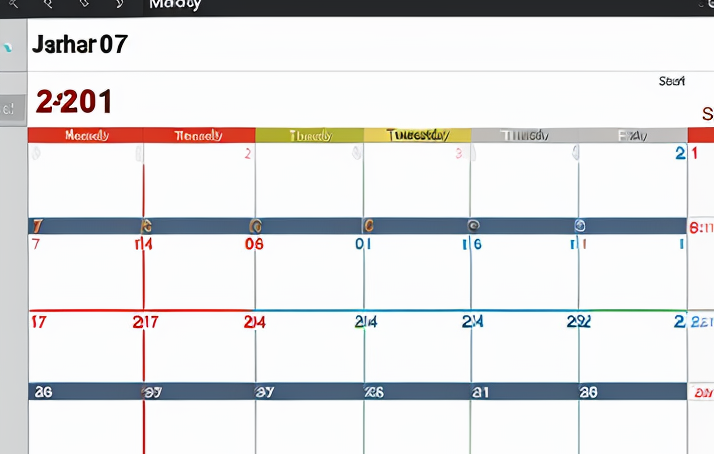How Often Should Human Resource Strategies Be Evaluated
Evaluating HR strategies is like checking a car’s oil. It keeps everything running smoothly. Some companies ignore this idea. They face serious issues later. Turnover happens more often in places that do not assess their HR. Employees feel tired and unmotivated. When staff care about their work, they stay longer.
Are You a Good Fit for This Job?
For example, a tech firm skipped this check-up. They saw high turnover last year. Employees left for better jobs. Leadership was confused. They thought their perks were enough. Sadly, perks do not create loyalty.
In contrast, another company reviewed their HR plans often. Every quarter, they checked how happy workers were. They got feedback and made changes. This made workers feel valued and listened to. Engagement skyrocketed, improving overall performance.
- Companies that evaluate HR strategies:
- Have happier employees.
- Lower turnover rates.
- Save money over time.
- Adapt quickly to changes.
At some point, we all need exams. Kids study, companies should too. Reflecting on HR practices is key. The world is changing fast. Workers demand more respect and care. Those who resist may fall behind.
A simple survey can help. Ask what employees want. This feedback can make a huge difference. Not everyone can predict what is coming next. Regular evaluations ensure organizations stay ahead.
Implementing effective HR policies is essential for maintaining a motivated workforce.
When companies ignore HR evaluation, they risk chaos. People lose interest. This leads to poor work output. If management does not take action, trust crumbles. Staff members may look for new jobs. It’s a domino effect.
To gain insights into the current market trends, it’s essential to understand the demand for HR professionals and their evolving roles in organizations today.
Short-term solutions might seem tempting. Yet, they don’t fix core problems. Continuous assessment leads to growth. Successful organizations understand this principle. They do not shy away from tough truths.
Analyzing data also matters. Companies should track their employee satisfaction scores. Solid metrics guide better decisions. These decisions can make or break an organization.
In tough times, HR becomes crucial. Businesses need strong leadership. They must prioritize their team. Evaluating strategies keeps the heart of the company strong. It is not just about numbers; it’s about people.
Understanding the Evaluation Framework (Case Study)

Evaluating HR strategies requires a strong framework. Different frameworks guide organizations in reviews. Some originate from academic research, others from practical needs. The choice impacts efficiency and success.
One well-known framework is the Balanced Scorecard. It considers financial and non-financial metrics. Companies like Starbucks use it. They focus on employee satisfaction and customer loyalty as key indicators.
Another effective model is the Kirkpatrick Model. This model comes from educational settings. Although it was created for training, it applies to HR as well. It evaluates reactions, learning, behavior, and results.
For example, a case study of Google offers insights. Google constantly evaluates its HR strategies. They assess programs through employee feedback. The result helps them stay innovative and aligned with goals.
A detailed framework is the 5C model: Criteria, Collect, Compare, Conclude, Correct. This model is structured and intuitive. Organizations can adapt it easily to their specific needs. It ensures well-rounded evaluations.
For instance, IBM utilizes a framework focused on data. They analyze performance metrics along with employee engagement scores. This data-driven approach leads to informed decisions for HR strategies.
Work From Anywhere Opportunities:
Case studies show that tailored frameworks yield better outcomes. Organization culture shapes how a framework is applied. Understanding context is crucial. A one-size-fits-all won’t work. Such focus may hinder growth opportunities.
Success stories highlight these frameworks at work. Companies report better alignment with goals. Regular evaluations create a responsive environment. It fosters innovation and reduces risks. Case studies share these benefits.
To sum up, various frameworks exist but require context. Incorporating case studies makes understanding easier. Organizations should evaluate regularly for best results. Applying the right framework matters greatly. The journey to effective HR evaluation is ongoing.
When to Evaluate: Timing is Everything
Timing matters when it comes to HR strategy evaluations. Organizations are always changing. When big events occur, it’s crucial to step back and assess the HR approach. New leadership, mergers, or layoffs can change everything. Evaluations should happen whenever major organizational shifts happen.
Sometimes, industries can shift suddenly. For instance, a tech boom might require new skills. At that moment, HR needs to think about recruitment and training. Industry trends can impact hiring goals and employee expectations. Ignoring this can lead to poor outcomes.
Internal feedback is gold. Regularly gather insights from employees. Their opinions can shine a light on areas that need attention. Maybe morale is low or communication is weak. These signs should trigger a reevaluation of HR strategies.
- After major organizational changes: Reassess strategies to align with new goals.
- Following industry shifts: Revisit skills needed for success.
- Based on internal feedback: Listen and adapt to employee concerns.
Don’t wait for a crisis to evaluate. Regular check-ins can make all the difference. A strategy should be flexible. It must evolve as the organization grows. Identifying key moments is vital to make necessary changes.
Each evaluation period doesn’t have to be long. Brief assessments can provide valuable insights. This is not just a box to check. It’s an essential part of creating a thriving workplace. People should feel valued and supported.
The urgency to evaluate cannot be overstated! When things are unclear, take action. Use the input from your teams to drive improvements. By continually reflecting, HR can support business goals effectively. Grasping the importance of timing enhances strategy success.
Measuring Success: What Metrics Matter?
To understand HR effectiveness, you must look at key metrics. Employee engagement levels show how connected people feel to their work. High engagement usually means better results and happiness. Turnover rates reflect how many employees leave over time. A high turnover rate can signal deeper issues. It shows that employees may not feel valued.
Performance reviews help assess individual contributions. They are not just about ranking workers. Instead, they provide insights for growth and development. Reviewing performance can guide future decisions and actions. A well-structured review can motivate employees. It can show them the path to success.
- Employee Engagement Levels: High scores equal a thriving work culture.
- Turnover Rates: A high rate signals problems within the organization.
- Performance Reviews: Regular feedback provides opportunities for improvement.
- Training Completion Rates: Tracks employee development and skill-building.
- Recruitment Metrics: Time to fill roles indicates efficiency in hiring.
These metrics work together to paint a picture. Think of them as puzzle pieces in a larger scene. They show how well the organization supports its people. Strong engagement and low turnover often are signs of a healthy workplace. Also, effective performance reviews can lead to skill enhancement.
It is not enough to collect these metrics. Organizations must analyze them deeply. Metrics provide valuable insights. They allow HR teams to identify strengths and weaknesses. Overlook them, and you risk stagnation.
Results from these metrics can guide strategic decisions. They should influence updates to policies and practices. Constantly evaluating HR strategies allows for flexibility. Adaptation is crucial in today’s fast-paced environment. Companies that measure wisely thrive where others struggle.
This link between metrics and organizational health cannot be overstated. Metrics help uncover issues before they escalate. Consider how these numbers reflect morale and productivity. They reveal trends that guide ways forward.
Continuous Improvement: Adapting to Changes
Continuous improvement in human resource strategies is essential. It helps to create a culture of adaptability. Companies must adjust to stay ahead. Without change, they risk becoming obsolete.
Regular evaluations keep the organization aligned. They foster innovation and growth. When organizations assess their HR strategies, they identify gaps. Feedback helps them address these needs quickly.
Take Google, for example. They constantly review employee feedback. This input leads to new benefits. Employees feel valued. Happy employees generally leads to high productivity.
Another great example is Netflix. They implemented a high-performance culture. Their HR practices change based on what works. They adapt to industry trends, which results increased engagement.
Organizations must be ready to adapt. Change is a part of business environments. Fortune favors the brave. Companies that embrace feedback can enhance performance.
- Assessing employee satisfaction regularly fosters trust.
- Implementing new training ensures skill relevance.
- Tracking hiring processes helps attract the best talent.
When HR teams focus on growth, results and success follow. Metrics are key in determining what works. This means being open to changing old methods. Each new strategy needs evaluation.
Adaptable companies often experience fewer challenges. They identify issues early. This proactive approach builds a strong workforce. It is neccessary for staying competitive.







